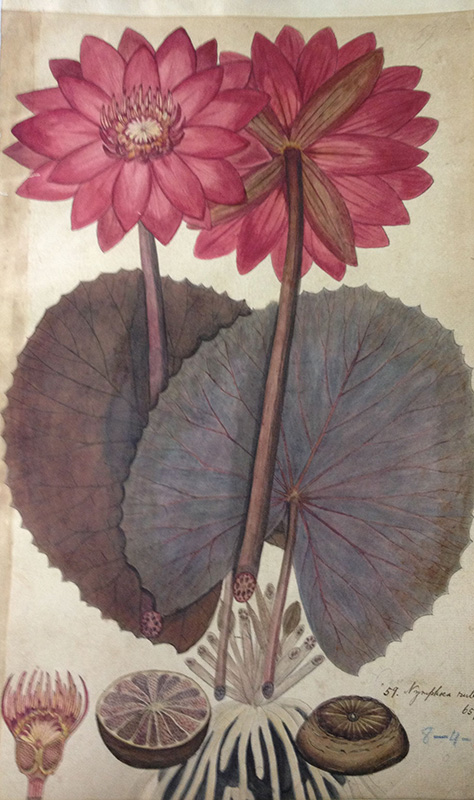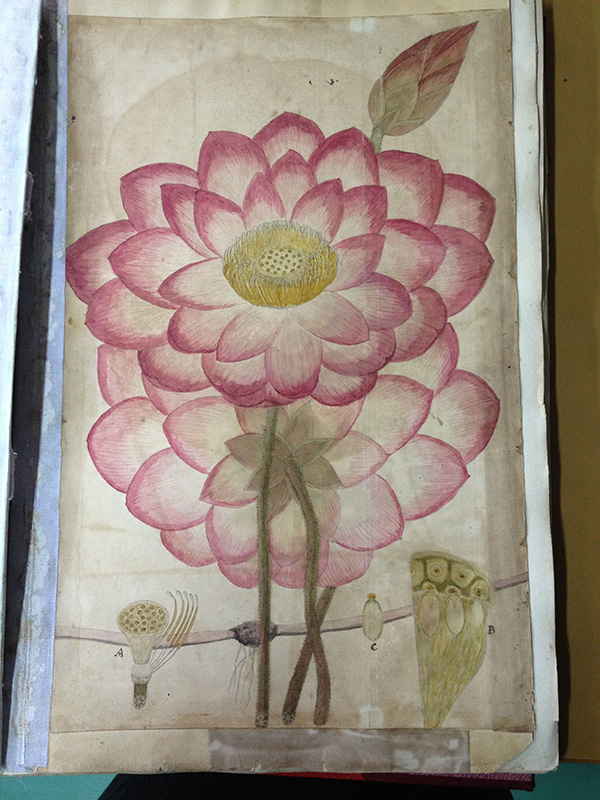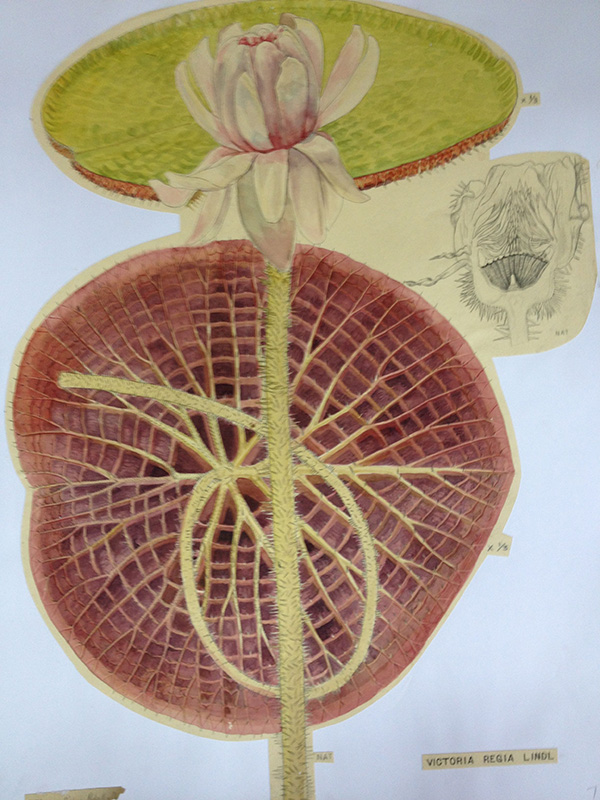Sita Reddy
Grant Period: Over one year and six months
Despite the sheer diversity of botanical motifs and designs in Indian art, craft, architecture and sculptural traditions, there have been very few attempts to trace, link and conceptualise the botanical art tradition of India. There has been no concerted published effort that explores and constitutes this tradition - artistically, aesthetically, historically, or culturally.
This grant to Hyderabad based researcher, Sita Reddy, is made with the intention to fill this gap. Sita will consolidate and document the botanical art traditions of south, central, and eastern India that were constructed through the mediations of the colonial Dutch, Danish, and British East India Companies from the 17th through 19th centuries. The research will focus on four major centres of East India Company - Cochin, Madras, Calcutta, and Bombay - each of which had a botanic garden during the colonial period, and an illustrated botanical text or collection of drawings of flora were commissioned by Company naturalists. These texts are Hortus Idicus Malabaricus (Hendrik Van Rheede, Cochin, 1678); Figures of Indian Plants (Robert Wight, Madras, 1840); The Dapuri Drawings (Alexander Hamilton, Bombay, 1841); and Flora Indica (William Roxburg, Calcutta/Saharanpur, 1832).
Botanical arts, as a genre is located somewhere in the intersections between art and science. There is a tendency to depict the flora either as idealised, stylised composites to support a narrative relying primarily on aesthetic/art history, or a naturalistic depiction as presented by scientific concerns. This is reflected in how they are represented through exhibitions and catalogues that gather visual representations of nature in contemporary Indian art. The exclusion of Company botanical paintings testify that they are seen to fall under the purview of science and not of the art. Sita argues that, “botanical art in the 18th, 19th, and 20th centuries must be examined both ways - as “Art and Science”, and, “story of botanical art must be told on its own terms – sui generis, images qua images – and what we need urgently is a visual genealogy that does not subjugate images to textual history or narrative”.
This project addresses three larger issues on the documentation of botanical art and the nature of documentation in India. First, is the issue of Archival reunification. Sita will explore the possibilities of recontextualising the botanical art tradition in its landscape by putting the art back in the garden from whence it came. Borrowing the metaphors such as ‘plants being the world’s original globalisers’, Sita will look at the scattering of botanical art in India after 1857 and its subsequent division between three archival homes – the India Office Library (housing official correspondence of Company officials), Herbaria (housing dried plant specimens), and the Botanical Gardens (housing the plants and drawings themselves). “Each of them sits in dispersed homes without ever meeting,” she says in her proposal.
The second issue concerns the politics of documentation and the place of indigenous artists in botanical traditions. Borrowing the notion of archival forgetting, Sita will study the information that was perhaps deliberately left out in the coding of colonial archival construction, especially the information on the indigenous artists whose art constitutes the collection and plant collectors who often go unnamed and unidentified. This decolonizing knowledge in these visual archives would involve researching and re-inserting the forgotten information in order to reconstruct a more integrated story of the botanical art tradition.
The third issue is that of connecting the documentation work with environmental activism today, where this artistic botanical heritage might prove a valuable archive for change. This work will bring to the fore the plants that were depicted and printed, perhaps drawing attention to the diversity of plant life in India and the rapid endangerment of many of them.
The outcome of this grant will be a website with four micro-sites that will draw together these botanical art collections and traditions by plant, place, artist, garden, drawing and print information. An associated outcome of this project, one hopes, will also include consolidation of an interdisciplinary research network across museums, gardens and botanical centers of scholars, botanists, museum curators, art historians, artists, gardeners, conservationists and environmentalists.
This grant was made possible with support from the Bajaj Group.




